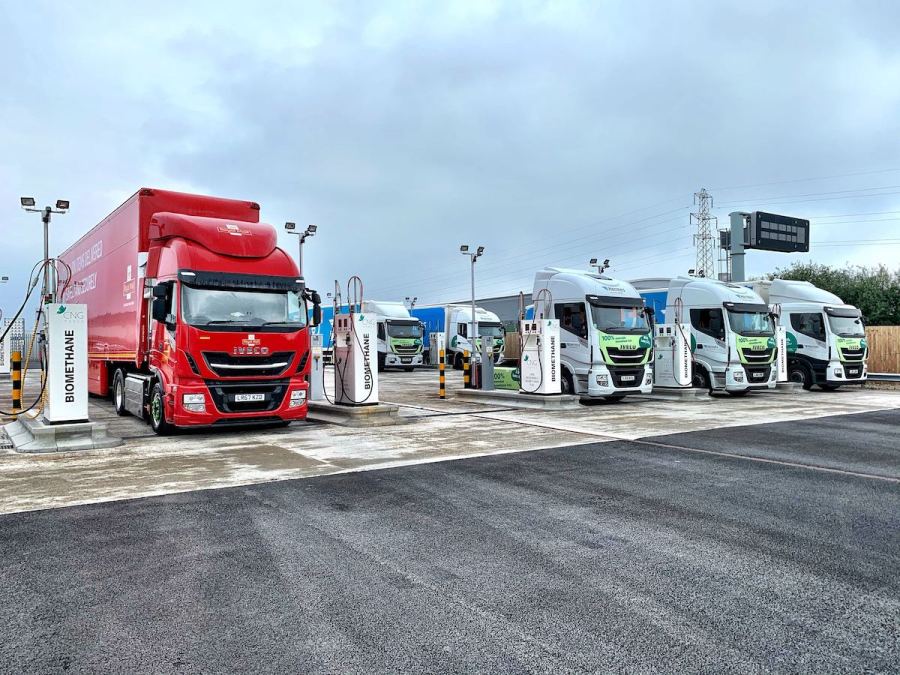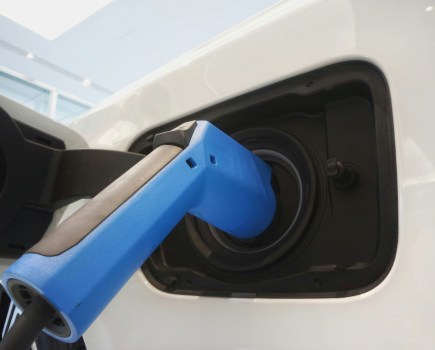When it comes to reducing CO₂ for road transport operators, what’s the immediate solution?
By Isaac Occhipinti, head of external affairs, GVN
There are around 35 million vehicles operating on UK roads. Over 40 per cent of our road transport CO2 emissions, along with nearly half the nitrogen oxide (NOX) and a substantial amount of particulate matter, is produced by just 11 per cent of these vehicles, comprising light commercial vehicles, heavy goods vehicles, buses and coaches.
And a staggering 20 per cent of the total transport sector greenhouse gas emissions, however, come from the UK’s HGVs. A vehicle type that does not lend itself well to the electrification agenda, HGVs provide the perfect opportunity for natural gas to be used to decarbonise transport.
HGVs are the most challenging road vehicles to transition to electric or hydrogen power, and a practical and affordable solution could be years away. This is why major logistics companies across the UK are today switching away from diesel to biomethane gas as a transport fuel, which can be supplied as both gaseous and liquefied fuels.
The vehicles are being produced and the refuelling infrastructure is developed.
Biogas benefits
Biomethane gas offers enormous potential to transform not only our gas grid, but also the transport sector. If just one per cent of LCVs, HGVs, buses and coaches were replaced by natural gas-powered equivalents, the UK would benefit from a CO2 saving of over 64,000 tonnes per annum and a reduction in NOx emissions of some 13 tonnes.
Unsurprisingly, the impact on emissions for each of these vehicle classes is disproportionately higher the heavier the vehicle.
Gas HGVs are already a commercial success story, having been adopted by many of the UK’s largest retailers, including Ocado, Waitrose, Argos and John Lewis, which recognise their emissions reduction credentials combined with excellent driving cycle performance and lower running costs.
John Lewis has committed to go 100 per cent gas by 2028. Logistics companies and parcel carriers such as Howard Tenens and Hermes have also committed to expanding their use of the fuel going forward.
In the absence of a viable all-electric alternative for HGVs, it is clear that to reduce emissions from freight transport and haulage, the Department for Transport’s Transport Decarbonisation Plan should recommend a role for gas HGVs as a key method for decarbonising heavy goods transport.
This will unlock the investment needed for building the required refuelling infrastructure, in turn creating jobs.
Cleaning up
Biomethane is today’s ultra-low carbon fuel of choice for fuelling HGVs and in particular for trucks travelling long distances. When sourced from certain feed stocks, biomethane is not only an ultra-low Greenhouse Gas (GHG) emissions fuel, but is a negative GHG fuel.
Wastes that would otherwise lead to significant methane emissions are instead used to produce a renewable and sustainable road fuel.
No other green technology is currently available to fuel heavy, long-distance logistics operations. It’s an obvious choice for our climate obligations, with biomethane, net CO2 emissions could be cut by over 84 per cent.
In addition, by switching from diesel to renewable biomethane gas, fleet operators could see savings of up to £29,000 per year, approximately 52 per cent.
The Gas Vehicle Network’s report entitled A Green Recovery: Delivering a rapid & cost-effective CO₂ reduction for Heavy Goods Vehicles (HGVs), showcases gas as a transport fuel. The report provides government and industry with all of the information they need to understand the key benefits.
It is becoming increasingly clear that gas (biomethane) can – and will – deliver substantial financial and carbon savings for fleet managers and government to 2030.
ABOUT GVN
The Gas Vehicle Network (GVN) is a trade association that represents participants from across the gas industry supply chain that play a role in the use of gas as a transport fuel, including: network operators, infrastructure providers, vehicle manufacturers, fuel providers and logistic companies. The Network works with government and other agencies to develop the framework within which the industry will operate.






